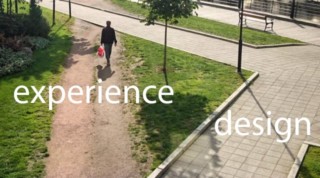The term “invisible” is often associated with good UX. It’s the opaque designs that stand between users and their tasks… just enough for users to stub their toes on. In a world where Webby Awards, Dribbble notoriety, and Net Awards… how do you reconcile the standing out with being invisible? This is the designers dilemma.
It’s worth mentioning that, what most people call UX is actually a complex set of nuanced and technical skills that emerged from divergent fields.
- Human Factors Engineering: Cognitive Psychology, Information Architecture
- Software Design: Interaction Design, User Interface Design, User Interface Development
- Publishing: Content Management,Technical Writing
- Commercial marketing & advertising: Graphic Design, Visual Design, Motion Graphics, Branding and Identity, Copy Writing
- Business & Technical Consulting: Business Analysts, Solutions Architecture, Project Management
- Engineering R&D: Ideation,Rapid Prototyping, Testing
- Industrial Design: Product Management, Product Design, Product Testing
All of these disparate fields and skill sets converged on an exploding field of digital experience research, design, and development and quickly cobbled together into a discipline we call UX.
I mention this not only to illustrate the breadth and depth of skills and expertise that gave birth to the field of UX, but also to give some background into why being “invisible” may not be uniformly heralded as the mark of great design achievement.
The Mark of Invisibility

When it’s said, the mark of good UX design is to be invisible… what exactly are we talking about? The term “invisible” while meant to be taken in the abstract, can be pinned down to some narrow themes. The phrase speaks more specifically to getting technology, UI design, and technical processes out of the way so users can complete their task with as little friction, confusion, and frustration as possible.
- COGNITIVE DESIGN: Information Architecture maps access points, workflows, and taxonomy to the end users existing mental model of the task and domain.
- UI DESIGN: Clean, clear and unobstructed access to key tasks, information, or content.
- TECHNICAL DESIGN: Clean technical design where systems integration, data calls, system messages, error handling, and user feedback are clear and only as frequent as absolutely necessary to completion of a task.
How can you achieve “invisibility”?

For the (a)cost conscious and and the mystical UX wizardry skeptics and (b)lean/agile “just give me a UI guy” startups… this might be tough to hear, invisible design takes carefully-planned user research, UX strategy & planning.
In order to get cognitive design right, you need to understand your users. How do they see the world in which your application or site is just a piece of? Do the workflows or terms you use in your system design align with their perception of tasks and definitions in their domain? Have you parsed access to the feature sets appropriately either localized to a context/role or are they asynchronously accessible to all? Unless you properly observe and analyze your products’ context of use in all it’s aspects you’re only seeing one half of the picture.
Some activities your team and or representative users can do to help you get on track:
- Open Card Sorting: Get a handle on the terms/taxonomy/folksonomy used to describe tasks, artifacts, milestones, status, etc. and how they are organized in the minds of the user.
- User Journaling: Have users keep a one week log of their use of your product… what were they doing before using it, what they want to accomplish by using it, anything that occurred to them during use (good/bad/indifferent) and what they did directly after using it.
- Contextual Inquiry or Task Analysis: Observe users using your product/site in live or simulated scenarios. Take note of anything that they encounter in the process including actions take outside of your product or site that might be a critically missed feature enhancement opportunity.
- Dog Fooding: The phrase “eat your own dog food” refers to “use your own product”. If it seems wonky to you, it’s going to feel that much more wonky to the users outside your organization. Make a regular habit of using your product.
Draw strength from your team
UI design is a multi-disciplinary collaboration. To ensure the seamless translation of user requirements captured in your user analysis, it’s helpful to have strong collaboration between the UI designer and the usability specialist (UX Unicorns, of course, are the exception). The intuitive clarity a user perceives when the UI is designed to meet them on common ground, might not be the award winning portfolio piece you were hoping for, but it’s what they needed, when they needed it, no more and no less… and that, my friend, is success.

- INTENT IS THE KEY: As you design, remember why they’re coming there in the first place. How can the layout, interaction modeling, navigation design and visual cues consistently enable their success at every step of the way?
- LESS IS MORE: Use “designed” elements to draw user focus to the salient information. Color, Shape, Texture, Emphasis, Contrast, Negative Space, Balance, etc. these are all tools you can use to ensure that the user see what they need to and clearly understand the relationships between form and function. Beyond that, you are adding clutter and confusion.
- K.I.S.S.: Admit once and for all that website/product users don’t read. Make sure you keep it short, sweet and to the point. Keep the “scent of information” clearly visible at all key content areas. If a user doesn’t get what they need in the first 5–10 seconds of scanning, it’s highly likely they’re going to bounce.

Technical design gets the crowing award for least recognized achievement in the industry. When this is done right, a user will never… NEVER know. While that’s like being the 1,273rd name on an ever scrolling film credit that no one will ever read, you are actually the backbone to making the entire facade of usability hang together. Without a clean and seamless technical design, the best cognitive modeling and UI design cannot hide the truth. Users will eventually hit the [insert error code and mishap jargon here] situation and that’s a bad day for the product.
- Design from the API Up: This aligns with getting with “user intent”… if the system isn’t made to flex to the needs of the user, you’d building it wrong. If it’s reusable functions, data, objects, status roll up or down to any higher more more granular meaning — build to extend it to any facet that can consume it for an optimized “don’t make me enter this for the 5th time” experience.
- Cascading Governance: You gotta love CSS because it inherently wants to govern style in this way, but style isn’t everything. Security, rules, functions, data presentations and interactions should follow a cannon that drives consistency and clarity for the user.
- Don’t fake it till you make it: If your integration of a feature, system, or what-have-you isn’t ready yet… don’t hack something together that isn’t built to scale or extend beyond the hack. This won’t just become obvious to your users, it’s going to break the system design.
Recognizing and Rewarding the invisible?
How will you know you’ve succeeded if you can’t gauge it on the “Oooo’s and Aaahhhh’s raining down accolades from AIGA and the [You name it] Award? Here are some KPI’s you can monitor that will tick up/down to tell you you’ve nailed it.. or to hit the drawing board:
- User Registrations (Up = Good)
- Transaction Rate / Transaction Time (Down = Good)
- Throughput (Up = Good)
- Productivity (Up = Good)
- User Satisfaction / Ratings (Up = Good)
- Support Calls (Down = Good)
- Training Costs (Down = Good)
- Sessions/Page Views (Up = Good)
- Bounces Rate(Down = Good)
- Social Shares (Up = Good)
If all lights are green, it doesn’t matter what the industry says… go out and get a beer, because you nailed it!

Here’s a round up of some good articles that highlight the problem:
- 6 examples of awful UX design
- Bad UX Tumblr
- Pinned UX Fails
- A running anthology of web pages that suck
And the feel good wrap up link: Great Designs Should Be Experienced and Not Seen by Jared M. Spool